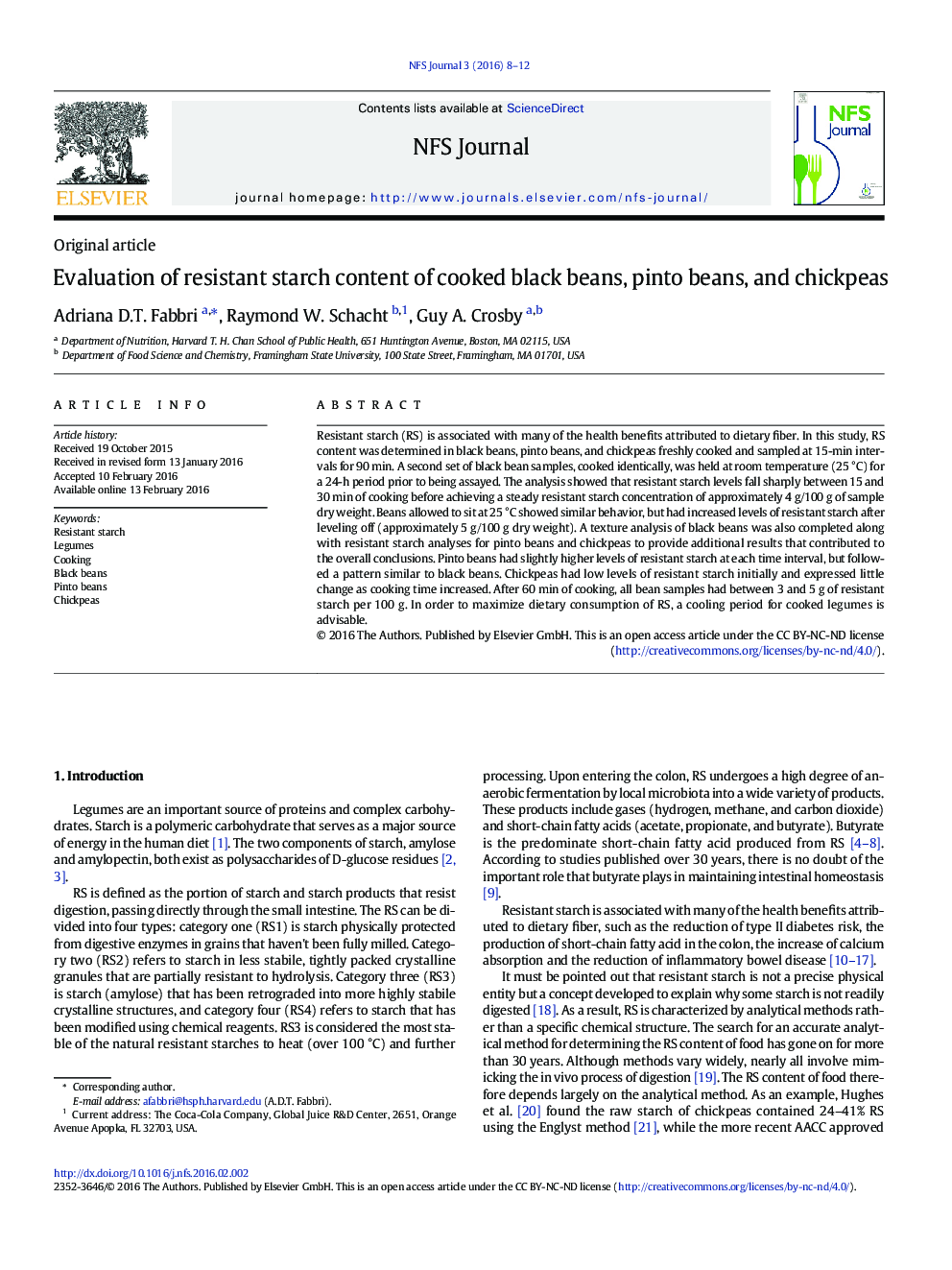| Article ID | Journal | Published Year | Pages | File Type |
|---|---|---|---|---|
| 1085608 | NFS Journal | 2016 | 5 Pages |
•Resistant starch (RS) can vary according to the legume and the cooking/cooling.•Pinto beans were found to be the best source of RS after an hour of cooking.•Processed products have presented more RS content than fresh cooked legumes.•A cooling period for legumes is advisable to increase RS consumption.
Resistant starch (RS) is associated with many of the health benefits attributed to dietary fiber. In this study, RS content was determined in black beans, pinto beans, and chickpeas freshly cooked and sampled at 15-min intervals for 90 min. A second set of black bean samples, cooked identically, was held at room temperature (25 °C) for a 24-h period prior to being assayed. The analysis showed that resistant starch levels fall sharply between 15 and 30 min of cooking before achieving a steady resistant starch concentration of approximately 4 g/100 g of sample dry weight. Beans allowed to sit at 25 °C showed similar behavior, but had increased levels of resistant starch after leveling off (approximately 5 g/100 g dry weight). A texture analysis of black beans was also completed along with resistant starch analyses for pinto beans and chickpeas to provide additional results that contributed to the overall conclusions. Pinto beans had slightly higher levels of resistant starch at each time interval, but followed a pattern similar to black beans. Chickpeas had low levels of resistant starch initially and expressed little change as cooking time increased. After 60 min of cooking, all bean samples had between 3 and 5 g of resistant starch per 100 g. In order to maximize dietary consumption of RS, a cooling period for cooked legumes is advisable.
